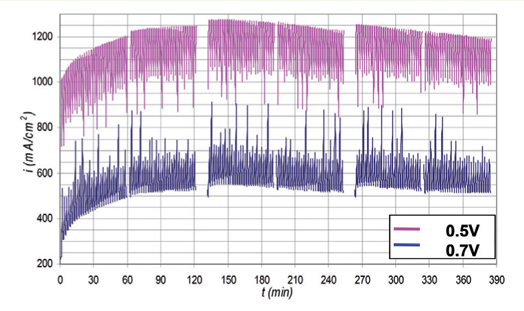Initial conditioning of Polymer Eelectrolyte Membrane fuel cell by temperature and potential cycling
DOI:
https://doi.org/10.17344/acsi.2014.730Keywords:
PEM fuel cells, conditioning, break-in, potential cycling, temperature cyclingAbstract
Polymer electrolyte membrane fuel cells need initial conditioning, activation or break-in the first time they are operated after being assembled. During this period performance of the fuel cell improves until it reaches its nominal performance. The exact mechanism of this initial conditioning is not completely understood, but it is assumed that during the conditioning process the polymer membrane, as well as the polymer in the catalyst layer, get humidified, and the number of active catalyst sites increases. Activation procedure proposed here consists of temperature and potential cycling. Temperature cycling is a new approach for the conditioning and the idea is to rapidly cool the running cell at some point to allow the membrane to equilibrate with condensed water which should result in higher intake of water within the membrane. The results show that proposed procedure is better or at least comparable to some conventional procedures for the initial conditioning.

Downloads
Additional Files
Published
Issue
Section
License
Except where otherwise noted, articles in this journal are published under the Creative Commons Attribution 4.0 International License
